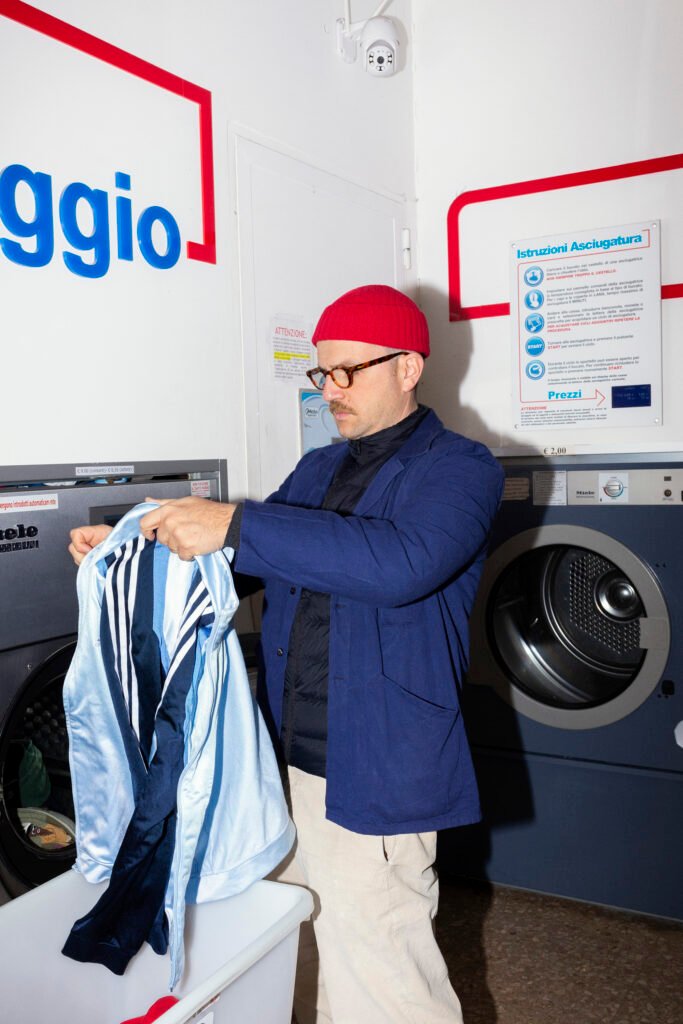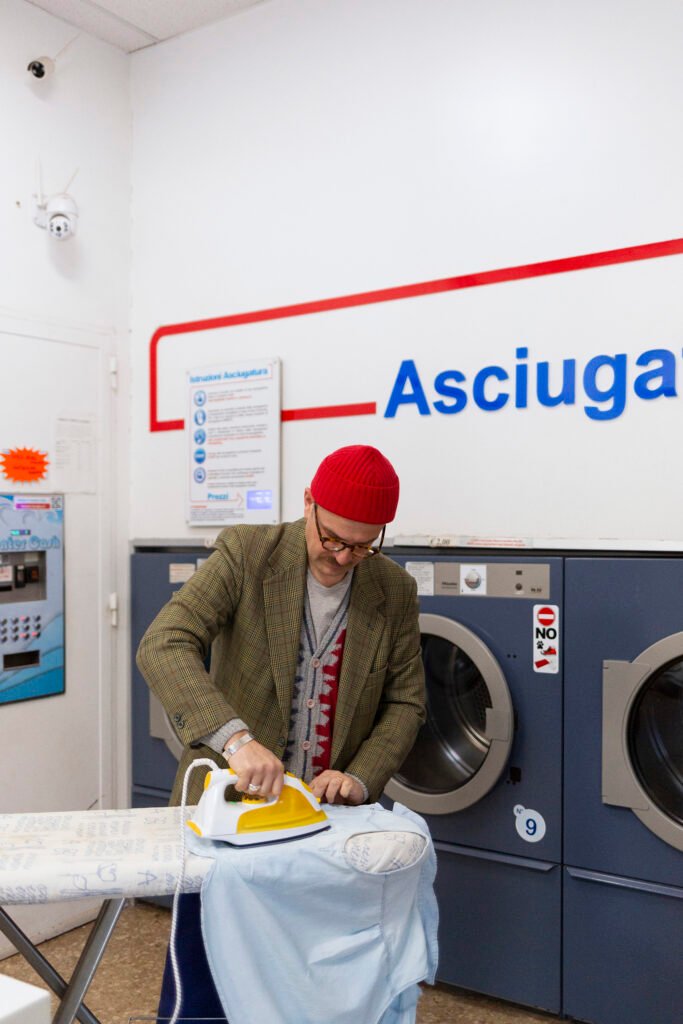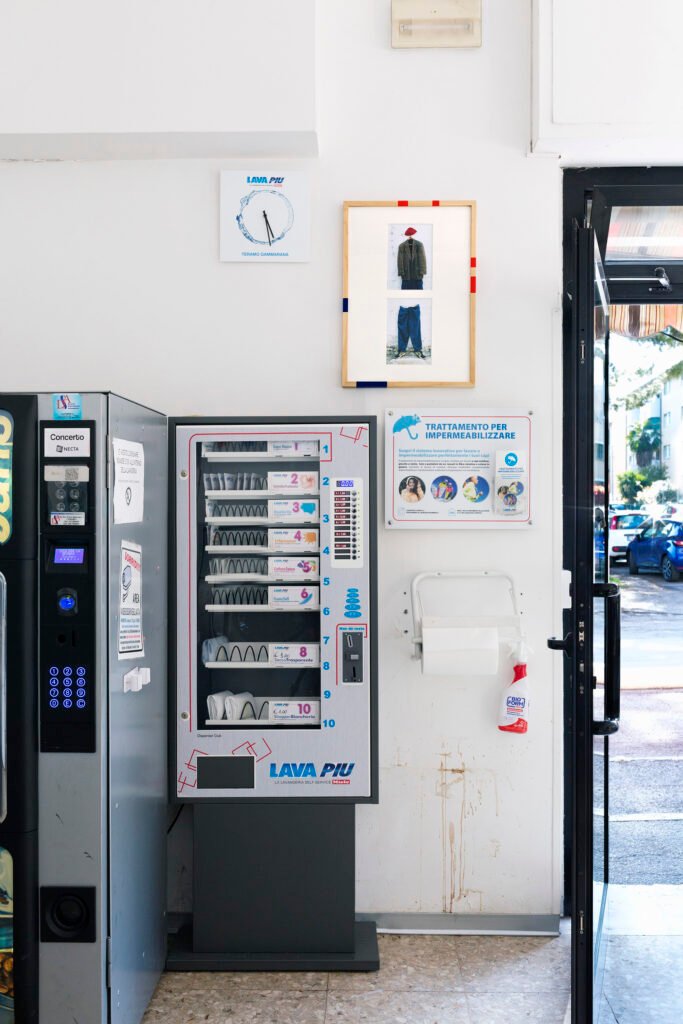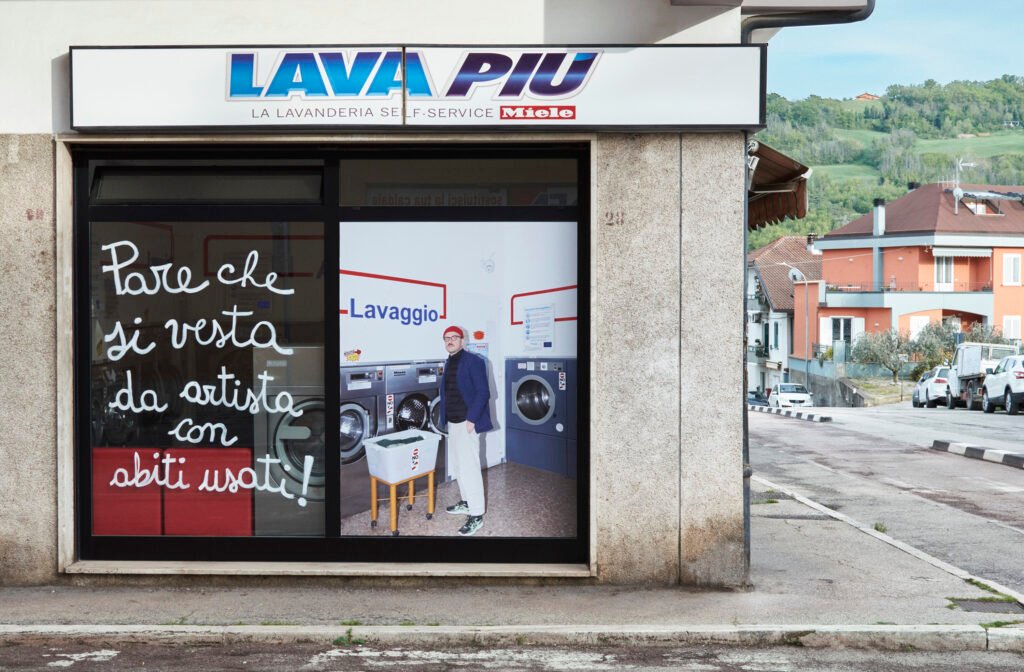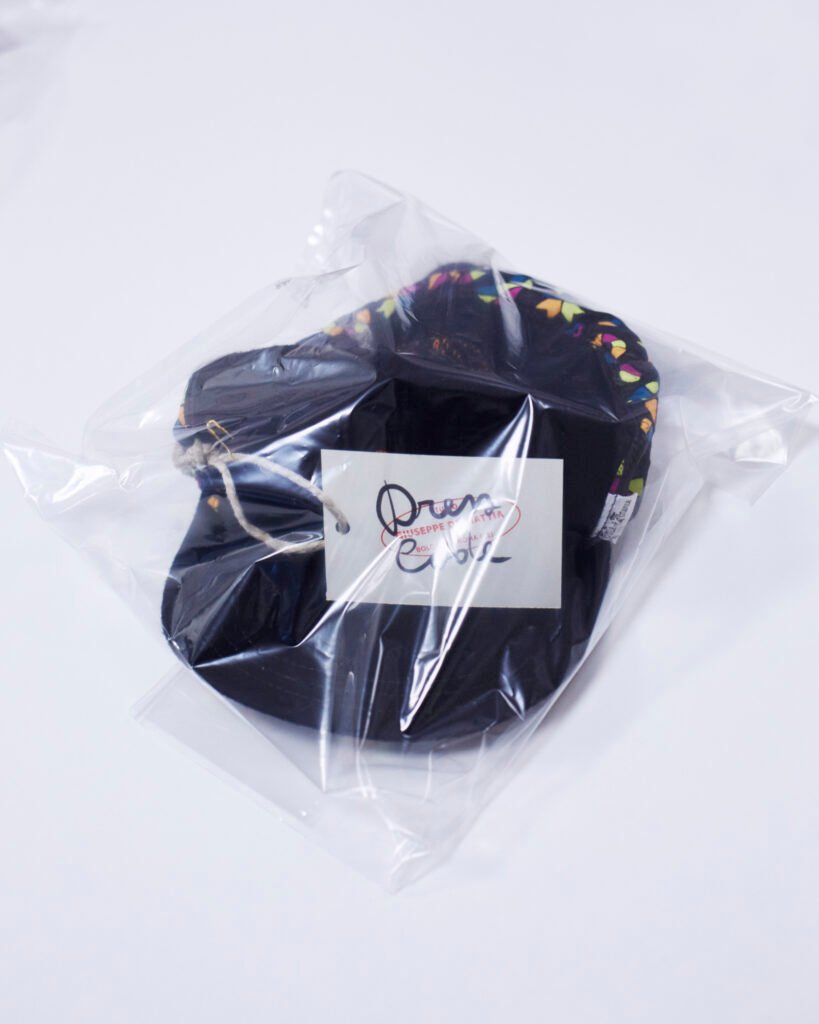The concentration of circumference
The main character of a novel by Tiziano Scarpa from few years ago, Il brevetto del geco, is a thirty-nine-year-old artist from Milan, determined to put an end to a career that never really took off. Depressed, reduced to poverty and squeezed in a twenty-eight-metre-squared studio flat in Milan, Federico Morpio finds himself coming to terms with years of sacrifices, a crumbled domestic partnership and a series of gestures driven by frustration and resentment. “What would have been left of him without art? It was an impossible question to answer. Without art he would have not failed so miserably. On the other hand, he would have cut himself off from reality. He had no alternative. Aside from art, he could not find a reason to pay attention to things”.
However, in the midst of his own existential and financial breakdown, his father’s sudden illness opens up a new job opportunity to him. Morpio moves into his house and becomes his carer. His daily routine changes radically. During one of the afternoons devoted to caring for the sick man, Morpio loads the washing machine drum with dirty laundry and sits in front of the porthole, as if it was a TV. The washing machine is a brain capable of weighing its own internal load, of reading itself inside, and establishing the time of operations; it is also mouth and anus at once, since access and expulsion coincide in the same opening; and then it is also intestine, as it is capable of separating dirt from what it is being processed and digesting it. From his point of view of art self-exiled, the spectacle of automated washing is a revealing experience of his relationship with artistic creation. The whirling motion of the centrifuge unveils the most astonishing insight: the centripetal velocity of the basket, pushing the laundry to the edges of its walls, makes it disappear as if it were no longer there. “Existence pushed to the maximum coincided with non-existence”. Morpio wonders whether, as the centrifuge squashes fabrics to the borders of its own circumference, hurling them outwards in a controlled expansion, it is equally possible to entertain a thought that does not work by concentration, through an inward movement, but by expansion, or rather, by circumferentialisation. Pushing matter to the sides and emptying the centre, going around it, to be able to see. Is it possible to create works of art in which thought and gaze act in the same way,” adhering powerfully onto the circumstances” in which they happen to be?
Whereas Federico Morpio learns a lesson in aesthetics from the operating programme of a washing machine, the artist Giuseppe De Mattia, invited to join the LAVA PIU exhibition programme, promptly decides to make use of it in his intervention, entitled Dress code. In front of the machine, the main character of the novel questions the nature of his own failure: is it due to his lack of talent or has he simply been unable to build the right relationships?
The astonishment felt by the artist reading Scarpa’s novel for the first time lies, in part, in finding thoughts he will have had at least once – or probably many times – in those of the character. Federico Morpio is as much of a literary mockery as the flesh-and-blood world of contemporary art itself. Yet the frustration, the feeling of being on the sidelines of History and of events, is – according to Maurizio Ferraris – the prevailing feeling of contemporary humankind. Not only in the small, egoic, self-referential art world.
Throughout more than 10 years of activity, Giuseppe De Mattia revisits the dynamics and implications of the artist as a profession – all effectively encapsulated in the character of Il brevetto del geco – such as “the need to sell one’s works at any cost, the mutual accusation of plagiarism among artists, the fear of fraud that underlies every purchase of contemporary art”. In 2019, in the exhibition “Esposizione di frutta e verdura” at the Matèria gallery in Rome, he staged a parody of a farmer’s market as a metaphor for the art fair, in which real and ceramic fruit only reveal their different natures in the days following the opening, as the vegetables decay. In De Mattia’s work, the market appears to coexist in the dual form of place of affection from his childhood spent in the 1980s South, but also in its less noble version of a black market. For example, in Ladri di piastrelle (Tile Thieves) (2022), the installation conceived for the spaces of OPR Gallery in Milan, the artist replicates a ceramic decoration of Portuguese azulejos, the object of a black market to be sold to Iberian cities’ tourists, designed to be offered to the public at an affordable price, hence bringing about the dismemberment of the artwork. In Dress code, the local market also functions as an essential point of contact for the artist with the territory he is working with for the first time, Teramo. The day before the opening, De Mattia asks to be guided by the curator to the market in the neighbouring town to buy second-hand clothes to use in the performance. The clothes must necessarily be retrieved from street vendors because they are already unclean, unlike new ones coming from the shop: the garments are indeed washed-digested by the laundromat operated during the artist’s performance, who then immediately irons them, assembles them into different outfits and places them in an envelope that also includes a label. Each packaged outfit is put on sale, as in The Tile Thieves, at an inexpensive price, in order to reiterate the anti-elitist nature of De Mattia’s art: “If you like an artist, it is only right that you should own at least one of his works”.
Each dress is a character, a costume, a portrait, a painting. Every multiple produced does not properly fall into the aesthetic category of the ready-made, since it involves an intervention of careful regeneration of the object. In addition, the artist’s operation does not imply a defunctionalisation of the consumer product, nor it decrees its irreversible entry into the realm of art as an object relieved of its function, because no one prohibits collectors from wearing the clothes once purchased. With Dress code, De Mattia seems to positively respond to Morpio’s question about the possibility of thinking by expansion, following the movement of the centrifuge so as to create an artistic experience which strongly adheres to the circumstances he finds himself in. The works that result from the performance at the market first, and in the laundry then, are processed found objects, in which the distinction between work of art and consumer good reveals all its fragility and insubstantiality. The connection between work of art and commoditised good is even more marked here. It is not motivated by the use value of garments (i.e. by the fact that they remain usable), but rather by their symbolic one. As Emanuele Coccia points out in Il bene delle cose, the quality of a good depends on the symbolic meaning that people give it, and it is this signifying charge that makes things exchangeable. Thus, the activation by the artist through trade at popular prices and the possibility of a connection with a public which is – such as that of LAVA PIU – not strictly composed of collectors, becomes crucial. A public that, via the purchase, is empowered to recognise the value of the operation through a financial investment. The work, just like any commodity, finds its value as part of a system of relations and exchange. “A pure and absolute community of men without things never existed and never will: it is in things and through things that men can meet”. Humankind has always existed around goods, within a market for the circulation of goods. The artwork is no stranger to this discourse.
From another point of view, the traditional mediation of the art gallery is ousted; as the artist points out, it is this that often prompts collectors to buy not because they are motivated by an interest in the works, but rather by the prestige of the galleries themselves, true brands of luxury goods.
Lastly, in other respects, De Mattia does nothing more than highlight the dynamics of commodity trade and, particularly, of the art market: the artist, the creator, the influencer, is the one always trying to sell something, even when not explicitly saying so. By contrast, De Mattia shows it, does not hide it, and indeed makes it the focus of his work.
IS IT NOT THAT, WITHOUT MEANING TO, I WANTED THIS EXACTLY? ISN’T IT THAT MY ART, SUCH AS IT IS, COUNTS NOT FOR THE FEW WORKS I PRODUCE, BUT FOR WHAT IT FORCES ME TO LIVE?
This is what Federico Morpio imagines carving on a tombstone. We wonder if Giuseppe De Mattia could ever come up with a version of this question that sounds something like this:
“IS IT NOT THAT, WITHOUT MEANING TO, I WANTED THIS EXACTLY? IS IT NOT THAT LIFE, SUCH AS IT IS, COUNTS FOR THE WORKS IT FORCES ME TO PRODUCE?”
Giuseppe De Mattia (Bari, 1980) is an artist who employs a dialogue of mediums to investigate the relationship between memory and contemporaneity. Photography, video, sound, drawing and painting can all be found and often blend within his work. As a keen observer of the contemporary artistic landscape, De Mattia’s work often touches upon structural issues tied to the economy of the arts, articulated through a dialogue between irony, satire and poignant critique. Alongside his personal practice, De Mattia collaborates with the collective Coclite/De Mattia and Casa a Mare (with Luca Coclite and Claudio Musso). He currently works with the Bologna film library and Home Movies – The national family film archive. He is represented by Matèria in Rome and OPR Gallery in Milan. He publishes his books with Corraini Editore, Danilo Montanari and Skinnerboox. In 2015 he launches ‘Libri Tasso’ an independent artist book self-publishing project and in 2020 he founded Marktstudio, a container of artistic projects inside a frame shop in Bologna. Giuseppe De Mattia currently lives and works between Bologna and Noha (Le).
